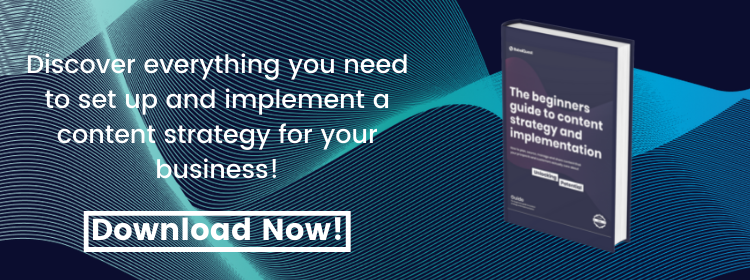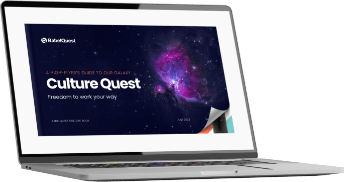Here's a question for you: did you find this article through a Google search or did it catch your eye in your LinkedIn feed? I'm willing to bet it was the latter. (Bonus points if you found us through organic search.)
It's easy to think that all you need to do is press publish on your new article and the sheer power of your genius will result in thousands of reads, likes and shares, right? Well, yes, sometimes. But the odds are against you.
The thing is, even for great articles or videos, you need a strategy that outlines where to promote and share them. Not only will this boost the number of target readers/viewers it reaches, it will also improve the longevity of your content, enabling you to reach new audiences, and ultimately generate more leads that actually go on to close.
This is your social media strategy and for this reason, it forms a vital part of your broader inbound marketing activities. In this article, learn all about social media promotion and how it helps your inbound marketing to generate results.

Content promotion: what does it mean?
I like this snappy definition of content promotion because it cuts straight to the chase:
'Finding places online frequented by your target readers so you can share your content with them.'
Promotion isn't spamming. What it is, however, is sharing relevant stories and conversations with the right people. What this entails is identifying your buyer personas, thinking about what information (content) they are interested in, and making a point of only providing that information.
Then — and this is key — look for the places online where these people already spend their time and set about sharing useful content with them. This doesn't mean spamming them with all your content but sharing the most relevant.
You can find these places by searching for them (not just via Google, but also through Reddit, Google+, Facebook, Quora, and LinkedIn). You might like to ask questions in specialist web forums. Other options where your audience might be found include online magazines, blogs, or forums.
Why is social media an important part of inbound marketing?
1. It helps you to deliver the right content to the right people
When you’ve found the digital dive bars along your buyer's journey, the next step is to get down with the platforms' language and customs. Don’t just share your content and leave it at that.
Your efforts will be much more effective if you spend some time understanding the ‘etiquette’ of groups, add your own insight and analysis on other’s content, pose questions to others and make use of influencers.
2. It can help to social proof your products/services
Find and reach out to industry experts and influencers, then ask for their opinions and encourage them to share your article with their peers if they found it useful.
B2C is the obvious example of this kind of marketing, but an equally strong story exists for the case of influencer marketing in the B2B space. 'Think about it: as business buyers, we are far more likely to look for referrals from peers and even competitors than we are to go in blind', said Thomas Brown, our Content Marketing Manager.
Read about the growing importance of customer service for B2B.
'If your target buyer is looking to make a significant investment in an inbound marketing strategy, CRM, new phone system, or even book a team night out, they are going to be wanting to reduce risk by seeking recommendations from others who have done the same before them.'
Whichever side of the fence you’re on, asking experts for their thoughts on your soon-to-be-published articles is a solid starting point. With their (hopefully insightful) quotes added in, there is a good chance they will then share the finished product, handily exposing your article and wider blog to their audience.
"If your target buyer is looking to make a significant investment in a marketing platform, CRM, new phone system, or even book a team night out, they are going to be wanting to reduce risk by seeking recommendations from others who have done the same before them."
3. It helps you position your content across multiple channels
Content amplification platforms will extend the reach of your inbound marketing as a paid tactic. They allow you to put your content (still retaining your branding) in front of your target audience across multiple channels, including websites, social media platforms, and other properties.
Examples include:
- StumbleUpon — a discovery engine that finds and recommends content to its users. It allows people to discover and rate content that is personalised to their interests
- Flipboard — a content aggregation platform that allows you to create a custom ‘magazine’ that users can find, share and subscribe to. Include a mixture of your own content and articles from external sources
- Outbrain — a content amplification platform. Articles are promoted to relevant websites based on the topic of the article. Outbrain’s algorithm finds the best sites to position your content to ensure the maximum number of conversions
- Perfect Audience — a content retargeting platform. Use Perfect Audience to build adverts that appear on other sites once your visitors have left your website. As part of your blog strategy, you should aim to create an advert that relates to the original article but contains a relevant content offer
- Inbound.org — an online hub bringing together content and ideas on inbound marketing from all over the world. A great place to get feedback on what you’re doing
4. Syndicated social content can boost your brand (and traffic!)
Syndicated content, which is another paid service, can be seen at the bottom of website pages under headings such as ‘from around the web’.
Basically, syndicating your content means that you are paying to form alliances with partners who have high traffic, therefore hopefully putting your content in front of relevant audiences and extending your reach.
5. It maximises the value of your inbound marketing content
Tweak the blog's articles to make them suitable for LinkedIn, Medium or other relevant sites and you can squeeze a few more miles out of them. You don’t have to do a total rewrite — just adjust to fit.
For example, if you are posting to LinkedIn Pulse, you may want to shorten your post and provide a link to the original. Here are some other good tips about writing for Pulse.
Social media promotion ideas
The secret to successful social media optimisation is to make sure that you take the time to understand what works best on the various platforms. You could just use them to share all your content, but you will get better results if you take a more strategic approach.
Here's some social media promotion ideas to get you started:
- Instagram has high rates of user engagement with brands, but 90% of users are under 35, so this platform is probably only worthwhile if your target audience fits into this demographic. You can pay to promote your content, and there are lots of targeting options, including by job title. An obvious but-still-worth-mentioning-point is that Instagram works best when your company has a well-defined visual identity, because it will bring some coherence to your posts
- Facebook also allows narrow targeting, but is not always effective for B2B marketing; do some research first to check whether it could be of use in your sector
- LinkedIn There is a lot to know about getting content promotion right on LinkedIn, and it is worthwhile reading an entire blog about it, such as this one. One feature that needs a special mention here though is the site’s SlideShare tool, which is great for packaging up content in an easy-to-digest format
- Twitter is a competitive platform, because of its high-volume low-value traffic. Your posts disappear fast — with a median lifespan of 18 minutes according to Moz. That might make you want to re-use each tweet multiple times, but your audience will pay more attention if you keep them fresh
Why isn't social media an important part of your inbound marketing?
The cardinal rule is to do persona research and focus on the platforms that your audience is most likely to actually use. Narrowing your focus in this way will drive a more effective content strategy, and also give you more time to properly invest in content promotion.
If you spend 30% of your time creating content, you should look to be spending the remaining 70% promoting it.
That might sound like a lot, but today's readers in your target audience could well be tomorrow's leads and next year's customers, depending on your buyer's journey and the length of their buying cycle.
There's no shortage of options available for promoting your content. But it's also true that there are no hard and fast rules for making this promotion successful. Without a limitless budget, you probably won’t want to try all the options at the same time — it will more likely be a case of taking the iterative approach described above.
Learn more about the crucial role promotion plays in your inbound marketing in our free guide to content strategy and implementation. Download it now by clicking the image below.







